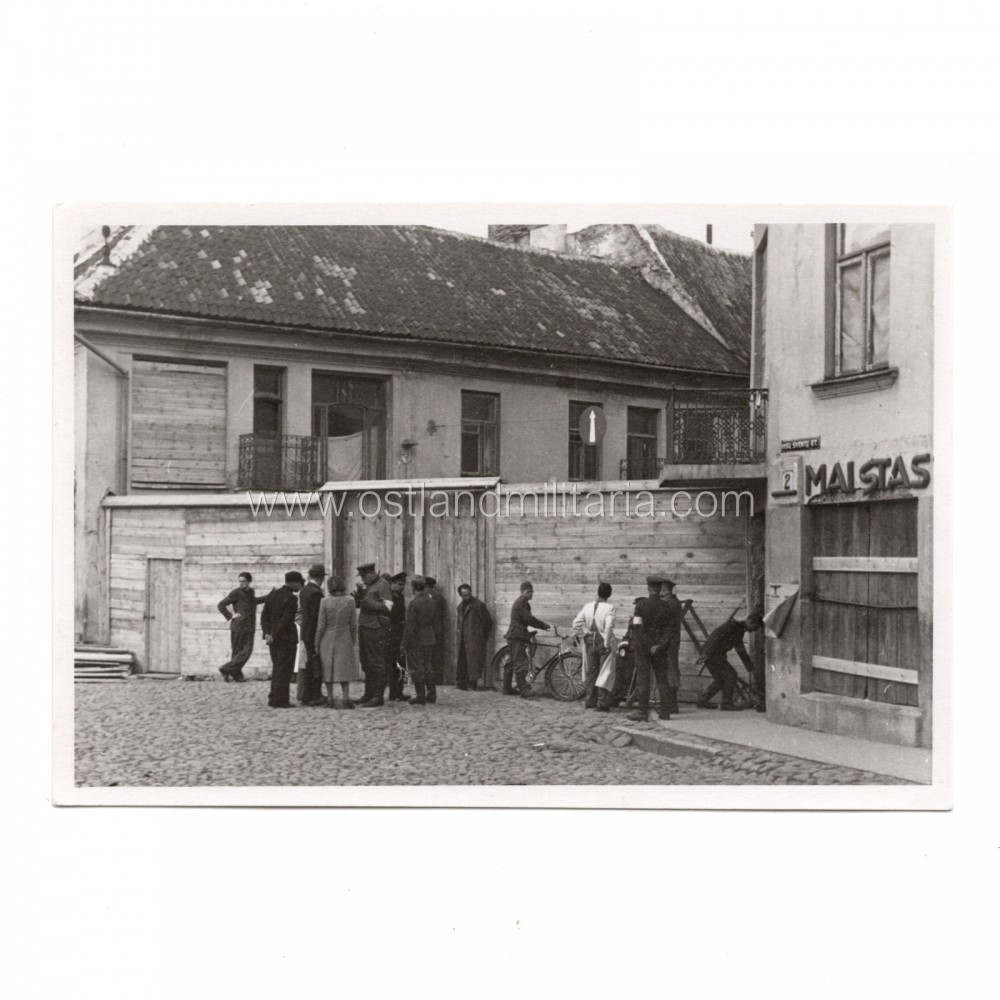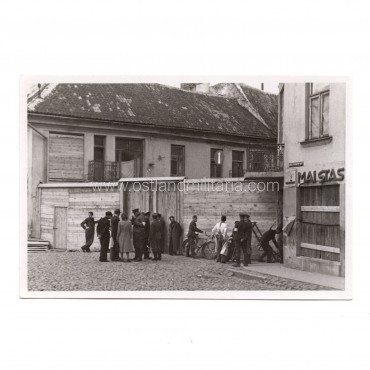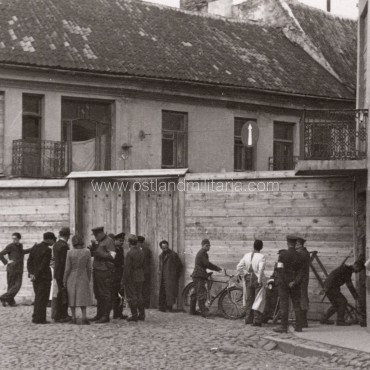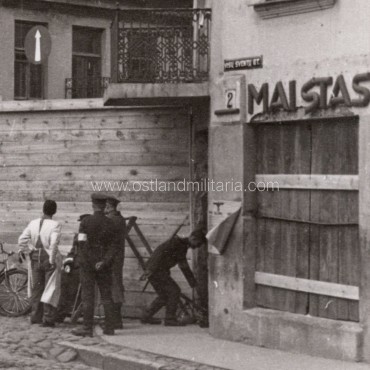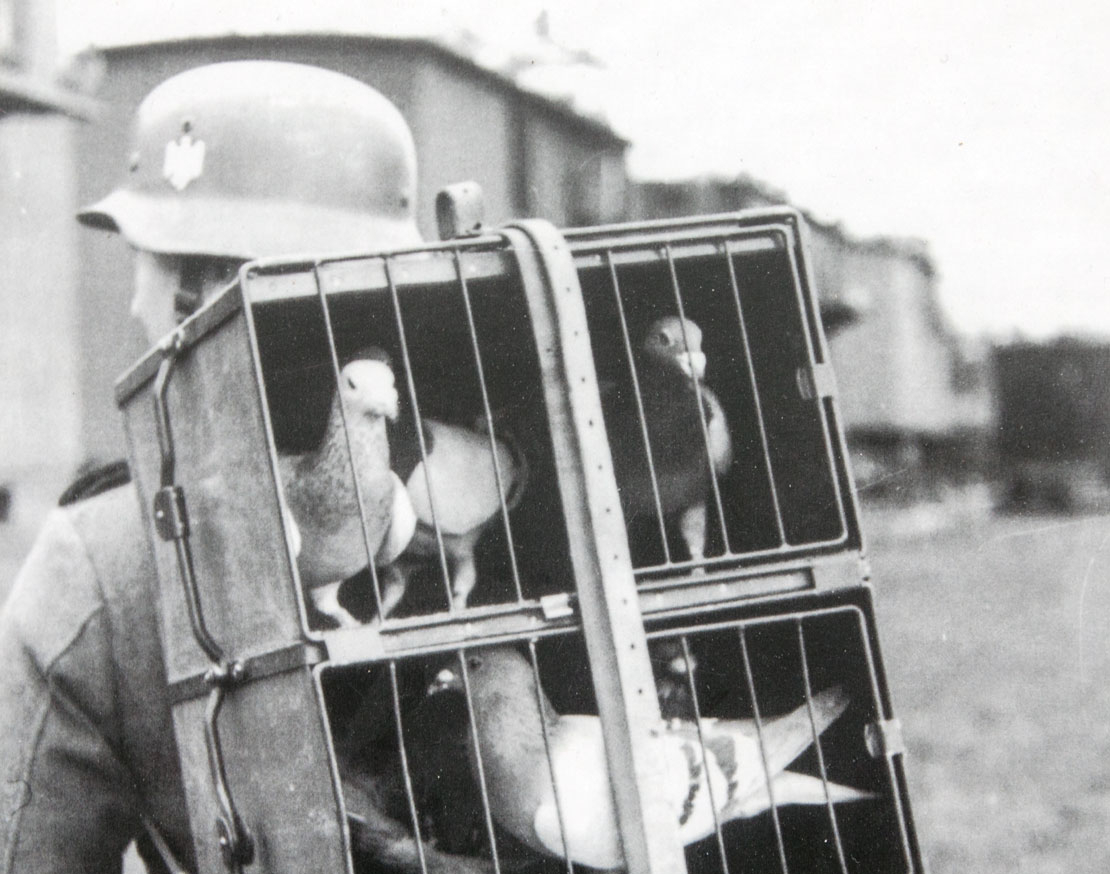
Returning Customer
I am a returning customer
Login or create an account
CloseIf you already have an account with us, please login at the login form.
Your Account Has Been Created!
Thank you for registering with Ostland militaria!
You will be notified by e-mail once your account has been activated by the store owner.
If you have ANY questions about the operation of this online shop, please contact the store owner.
Account Logout
You have been logged off your account. It is now safe to leave the computer.
Your shopping cart has been saved, the items inside it will be restored whenever you log back into your account.
Photo of Jewish and Lithuanian police guarding the entrance to the Vilna ghetto, 1941–1943.
Very rare. Printed on LEONAR photo paper.
Approx size - 9,0 x 6,1 cm
On June 22, 1941, Nazi Germany invaded the Soviet Union and in a few days seized Lithuania. The persecution and the political discrimination of Jews in Vilnius began in the first days of the occupation. In July 1941, the German military administration issued a series of anti-Jewish decrees, e.g. all Jews had to wear hexagonal stars of David on their chests and backs and were forbidden to appear on the streets from 6 p.m. to 6 a.m. In the middle of July 1941, the mass arrests of Jews began. The detainees were driven to the prison of Lukiškės, then transported to Paneriai and shot. In the first days of September 1941, the organization of the Vilnius Jewish ghetto began. Jews from different neighborhoods of the city were methodically relocated to the ghetto and accommodated in two ghettos in the Old Town: the Small one (Ghetto No. 2) and the Big one (Ghetto No. 1). There were almost 40 000 Jews living in the ghettos. Nazis’ aim was to leave in the ghetto only able-bodied and qualified Jewish workers or craftsmen and to destroy all the others. Mass extermination campaigns continued until the end of 1941. The mass actions in the Small ghetto continued until October 30, 1941, before the ghetto was finally liquidated and its inhabitants shot in Paneriai. By the end of 1941, only about 20 000 inhabitants remained in the Vilnius ghetto. The gradual liquidation of the Vilnius ghetto began in August 1943. On September 23-25, 1943, the ghetto was finally liquidated. Most Jews were deported to concentration camps, and forced labor camps, some were immediately murdered. Only about 2 000 – 3 000 of Vilnius Jews survived the German occupation.


